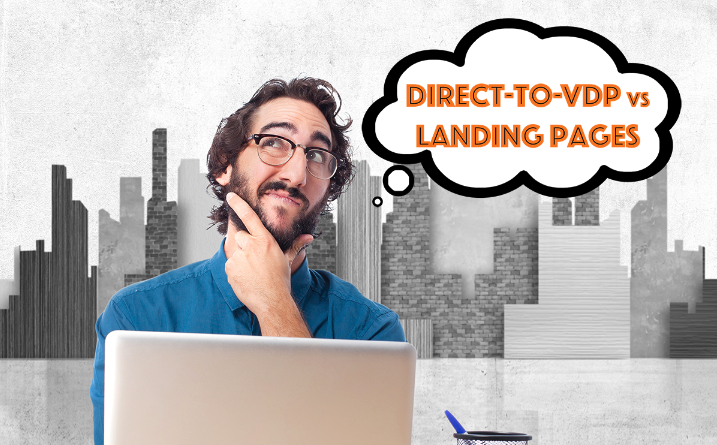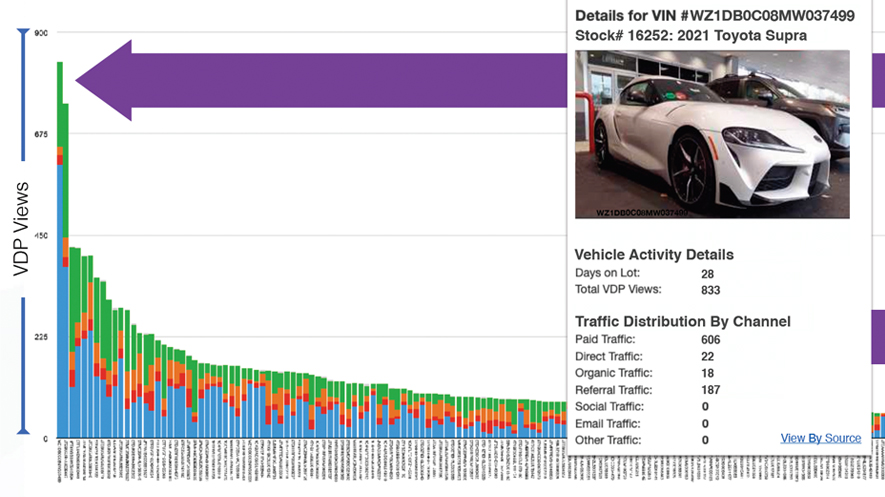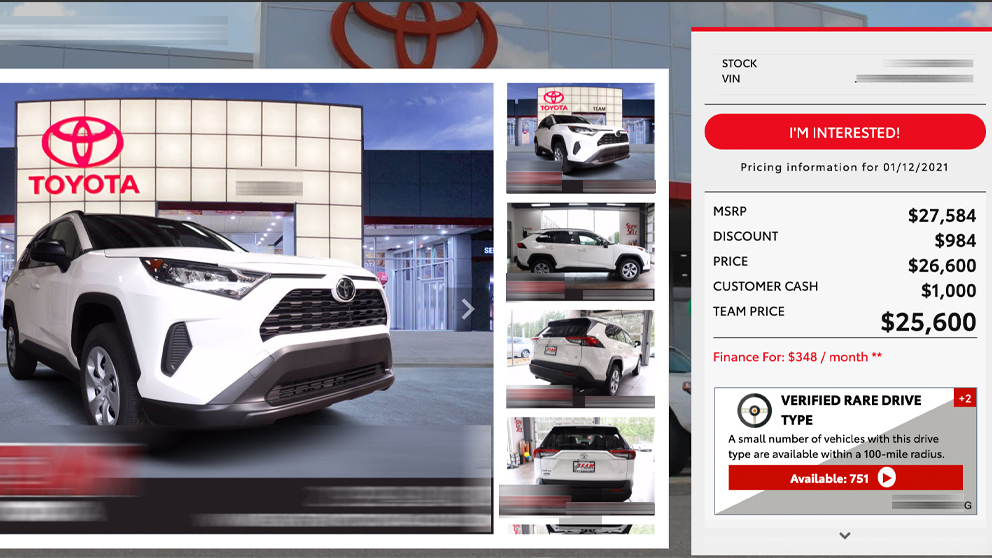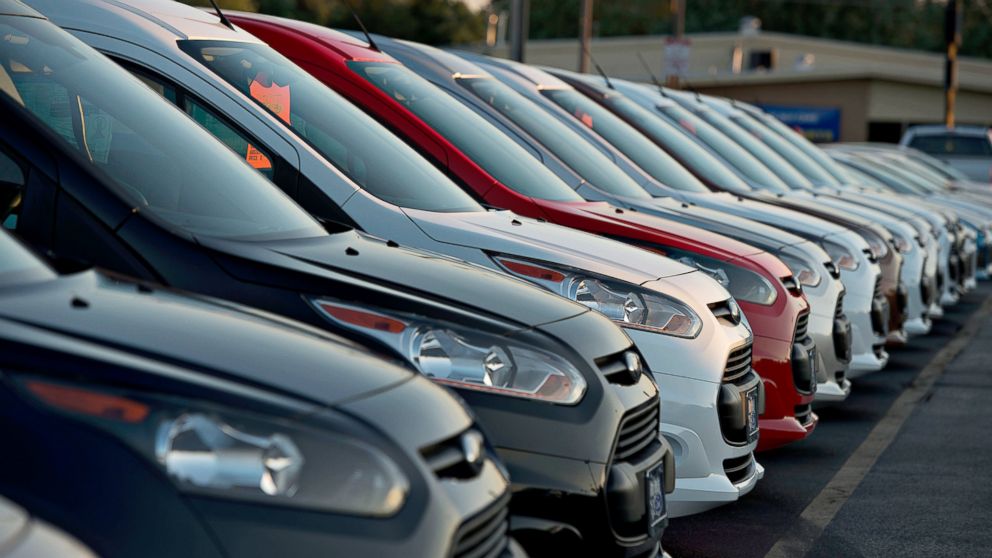Why is Driving Traffic Directly to VDPs better than Generic Landing Pages?
Why is direct-to-VDP advertising better than landing a buyer on a typical landing page? The adage is true, “The shortest distance between two points is a straight line.” We’ve referenced the Punchline Effect in previous webinars wherein, the more clicks a customer has to navigate through on your site, the more search abandonment your analytics will record. So if the goal is to sell more cars then the more buyers you lose, the fewer cars you can count on selling.

Get from search to sell … faster.
Consider this, if your website is the online version of your dealership, is there any logic in having a buyer arrive at your lot and then wander around until they find the car they wanted? Of course not, so why would that be okay online?
Let’s examine this more closely with our poor, wandering buyer on the car lot. If they are left to their own devices to wander the car lot looking for the car they came to find, there is a pretty good chance they will leave without making a purchase. If they arrive at the dealership and are escorted by a salesperson directly to the car(s) they are interested in and receive a personalized product recommendation; they are very likely to (at least) take a test drive.
A study from eConsultancy.com has found that an in-market buyer is 5.5 times more likely to become a customer if they clicked on a personalized product recommendation.
This is a simplified example of why Direct-to-VDP works much better than ads leading to typical landing pages or your home page. Buyers want to feel that the dealership understands their needs and curates a personal experience for them, whether this happens online or on-site. In this digital age we can show the in-market shopper the car(s) they are most interested in – the clearest path is to show them that car and click to that car’s VDP.
So, what is a high-value ad? We like to define it as – A relevant advertisement that takes a buyer directly to the vehicle they’re searching for and prompts that consumer to visit the showroom or connect with the dealership.
How will you know if your advertisement is working to achieve these results? One clear way would be to measure VDP Efficiency (The number of VDP views / number of sessions for a traffic source). I’ve discussed this very topic in a webinar to help set up your Google Analytics to measure that statistic.
Ads designed to go directly to VDP typically have an efficiency rating of between 65 and 75%, in other words, for every 1000 people looking at the ads, roughly 650-750 click through to view a VDP. The last 25% – 35% are typically a buyer clicking on the company’s logo. In our world – these clicks go to the SRP that is relevant.
Whether clicking directly on the VDP or going to a relevant SRP, that is high-value advertising. This type of curated advertising experience will drive in-market buyers to your site more effectively and efficiently.
Direct to VDP is King.
In today’s world of thin margins and ultra-competitive sales, it’s important to not waste advertising dollars on “maybes”. There is no reason to forget SEM, Adwords, and typical landing pages entirely because they obviously have their merits. When you look at the cost per click of Adwords, it’s pretty normal to think you’re getting a great deal. When you dig deeper, you’ll likely realize that you probably need to spend $12 or more per VDP view, that’s likely not as cost effective as you may have thought.
Direct-to-VDP advertising is more effective at driving people to see your inventory and each click is going directly to a VDP rather than a list page. Instead of paying for clicks that may (or may not) result in the buyer seeing the car they want to buy, you’re paying for clicks directly to the car they DO want.
I’ll go back to the analogy that your website (as well as your advertising) is an extension of your dealership. Think of a buyer coming into your showroom, asking for the blue Camry they’re interested in. Your salesperson tells him that the Camry line is in the back near the fence and to call him when they have found the right one. This is not unlike the typical landing page experience.
Direct to VDP Ads are the equivalent of having the salesperson walk the buyer directly to the car they asked for. Isn’t that what you train your staff to do anyway? More importantly, this is the experience (as a buyer) you would want to have. As an extension of your business, your advertising should be as good as your best salespeople.
A final truth about today’s consumers: 54% would consider ending their relationship with a retailer if they are not given tailor-made, relevant content and offers. This will be the most important fact when determining when to turn to Direct-to-VDP advertising. The simple truth is, today’s buyers want to feel they are the most important customer you have. They want to feel that from your dealership team, your website and your advertising.







